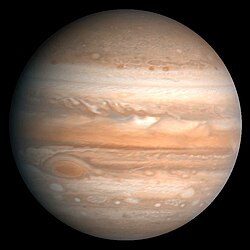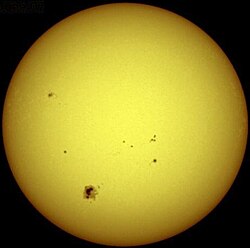Grand prismatic spring
Autor/Urheber:
Jim Peaco, National Park Service
Größe:
1999 x 1277 Pixel (512525 Bytes)
Beschreibung:
Aerial view of
Grand Prismatic Spring; Hot Springs, Midway & Lower Geyser Basin,
Yellowstone National Park. The spring is approximately 250 by 300 feet (75 by 91 m) in size. This photo shows
steam rising from hot and sterile deep azure blue water (owing to the light absorbing
overtone of an
OH stretch which is shifted to 698 nm by
hydrogen bonding [1]) in the center surrounded by huge mats of brilliant orange
algae,
bacteria and archaea. The color of which is due to the ratio of
chlorophyll to
carotenoid molecules produced by the organisms. During summertime the chlorophyll content of the organisms is low and thus the mats appear orange, red, or yellow. However during the winter, the mats are usually dark green, because sunlight is more scarce and the
microbes produce more chlorophyll to compensate, thereby masking the carotenoid colors.
Weitere Informationen zur Lizenz des Bildes finden Sie hier. Letzte Aktualisierung: Wed, 12 Oct 2022 20:24:26 GMT
Relevante Bilder
Relevante Artikel
Rare-Earth-Hypothese
Die Rare-Earth-Hypothese ist die Annahme, dass das komplexe vielzellige Leben der Erde auf eine unwahrscheinliche Kombination vor allem astrophysikalischer und geologischer Voraussetzungen zurückzuführen ist. Der Begriff Rare Earth stammt aus dem im Jahr 2000 erschienenen Buch Rare Earth: Why Complex Life Is Uncommon in the Universe von Peter Ward, einem Geologen und Paläontologen, und Donald Brownlee, einem Astronomen und Astrobiologen. Der Titel der deutschen Ausgabe lautet Unsere einsame Erde: Warum komplexes Leben im Universum unwahrscheinlich ist.
.. weiterlesen














